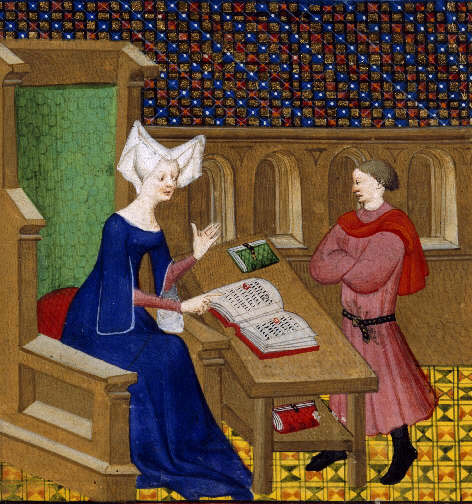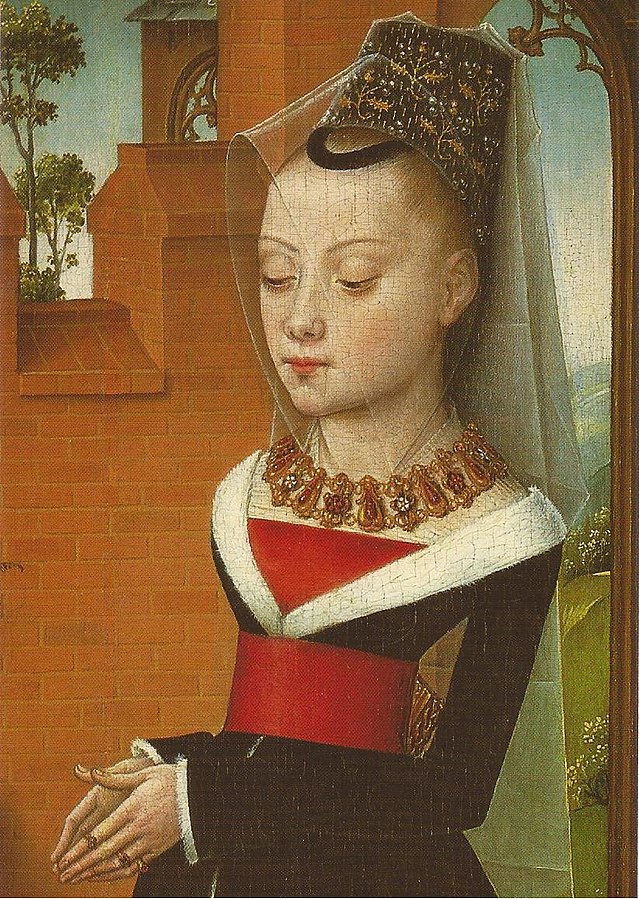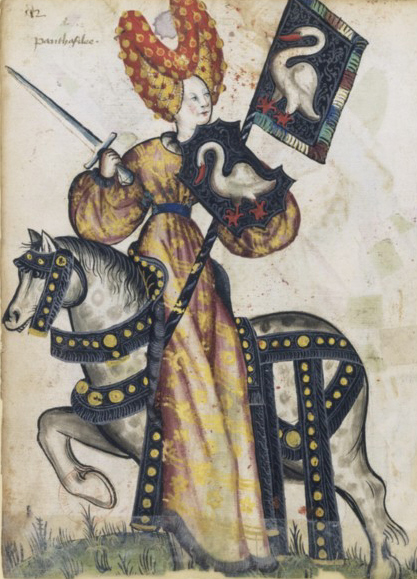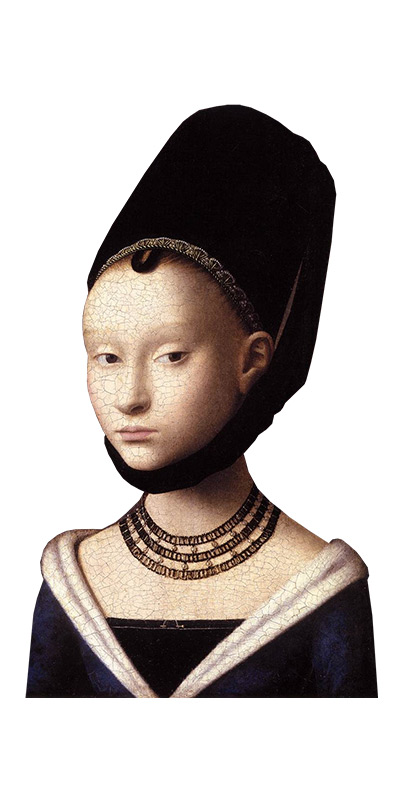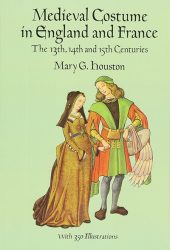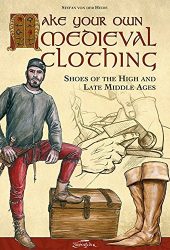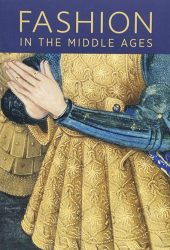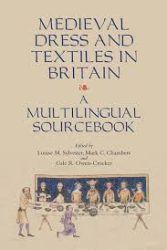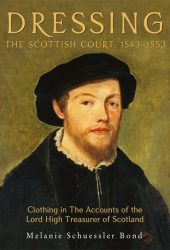The hennin was a headdress shaped like a steeple or truncated cone and popular among women of the nobility during the late Middle Ages.
Hennins were common in France and Burgundy and popular at the English courts. Conical hennins appeared around 1430 among aristocratic women and spread more widely in the following century.
Some of the hat’s tops were conical and pointed, while others were truncated and ended in a flat top. Hennins were generally accompanied by a veil or cointoise that fell on the woman’s shoulders and in some cases even to the ground.
The escoffion was made of a thick, circular roll of wool, felt or silk and was shaped into a double-horn configuration. Each horn could be up to a yard long.
Wearing a Hennin in Medieval Times
The hennin was worn at an angle, tilted backwards. In front of it and covering part of the brow was a cloth lappet or cornet, which sometimes fell onto the shoulders on either side. A frontlet or short loop can also be observed on the forehead. This was probably used to adjust the henin forward or hold it on in wind.
During medieval times, it was usual for women to plusck or shave the forehead in order to raise the hairline. The hair was tied and hidden inside te cone – and the veil possibly wrapped around.
Types of Medieval Hennins
The term hennin has been used to describe a variety of different styles.
- High-pointed Steeple Cone: Cones could be up to 80 centimetres in length and were usually made of light materials such as card or wire mesh with afixed fabric. Although popular in the continent, they were worn in England only by the most fashionable noblewomen.
- Flowerpot Hennin: This hennin consisted of truncated cone, cut off halfway down. The flowerpot hennin was worn at a 45 degree angle at the back of the head.
- Butterlfly Hennin: A henin with wires or canes coming out of the back and supporting arranged veils in a “V” shape. This style was most fashionable during the reigns of Edward V and Richard III. Frequently found on church brasses.
- Heart-shaped Escoffion: A piece of headwear popular during the Late Middle Ages in England, France, and Germany. Made of a thick, circular roll of wool, felt or silk, the escoffion was shaped into a double-horn configuration. Each horn could be up to a yard long. Over the headdress, women draped gauze or silk.
Image Gallery: Depictions of Hennins
